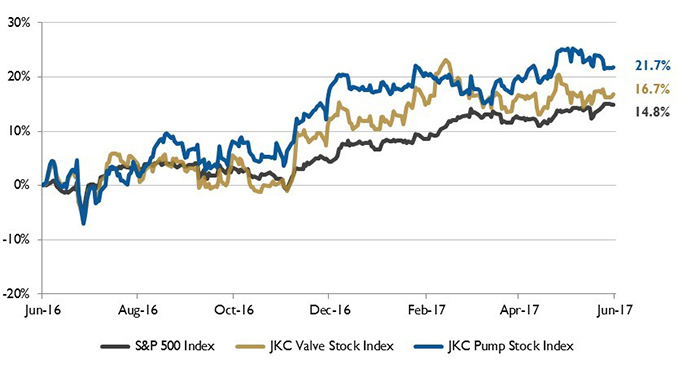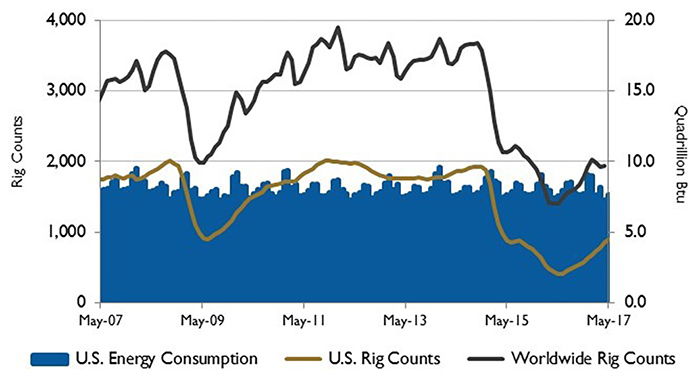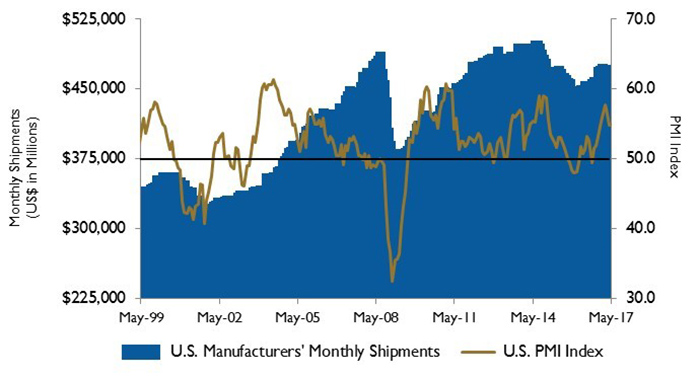The Jordan, Knauff & Company (JKC) Valve Stock Index was up 16.7 percent over the last 12 months, while the broader S&P 500 Index was up 14.8 percent. The JKC Pump Stock Index increased 21.7 percent for the same time period.1 The Institute for Supply Management’s Purchasing Managers’ Index (PMI) increased slightly to 54.9 percent in May compared to 54.8 percent in April. New orders (rising to 59.5 percent from 57.5 percent) and employment (increasing to 53.5 percent from 52.0 percent) grew at a faster pace during the month. However, both production (decreasing from 58.6 percent to 57.1 percent) and exports (falling from 59.5 percent to 57.5 percent) eased for the month, but still remained in positive territory. The production index is currently slightly above its 12-month average.
 Figure 1. Stock indices from June 1, 2016 to May 31, 2017. Local currency converted to USD using historical spot rates. The JKC Pump and Valve Stock Indices include a select list of publicly traded companies involved in the pump and valve industries weighted by market capitalization. Source: Capital IQ and JKC research.
Figure 1. Stock indices from June 1, 2016 to May 31, 2017. Local currency converted to USD using historical spot rates. The JKC Pump and Valve Stock Indices include a select list of publicly traded companies involved in the pump and valve industries weighted by market capitalization. Source: Capital IQ and JKC research. Figure 2. U.S. energy consumption and rig counts. Source: U.S. Energy Information Administration and Baker Hughes Inc.
Figure 2. U.S. energy consumption and rig counts. Source: U.S. Energy Information Administration and Baker Hughes Inc. Figure 3. U.S. PMI and manufacturing shipments. Source: Institute for Supply Management Manufacturing Report on Business and U.S. Census Bureau
Figure 3. U.S. PMI and manufacturing shipments. Source: Institute for Supply Management Manufacturing Report on Business and U.S. Census Bureau
